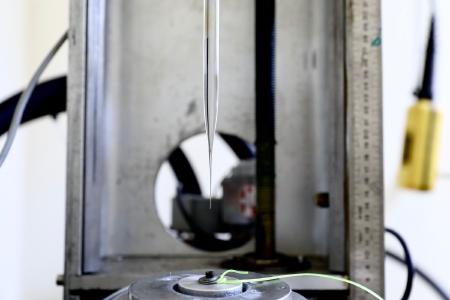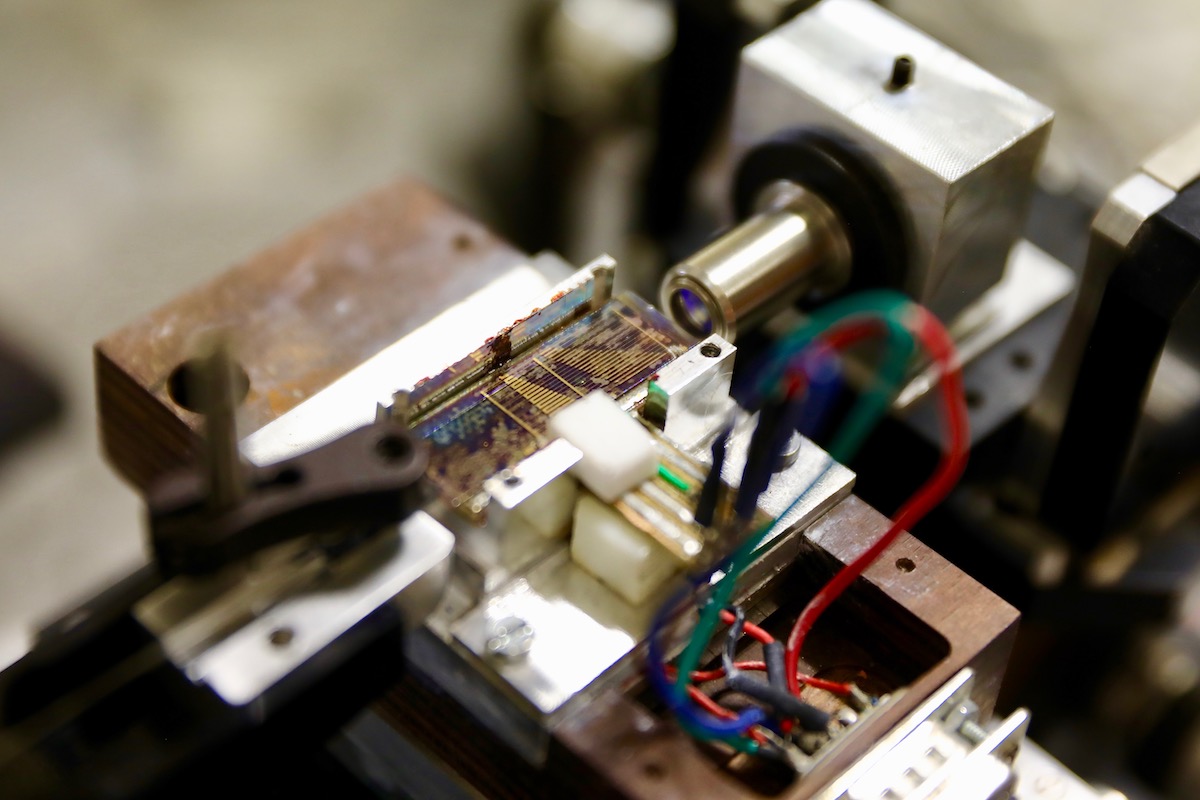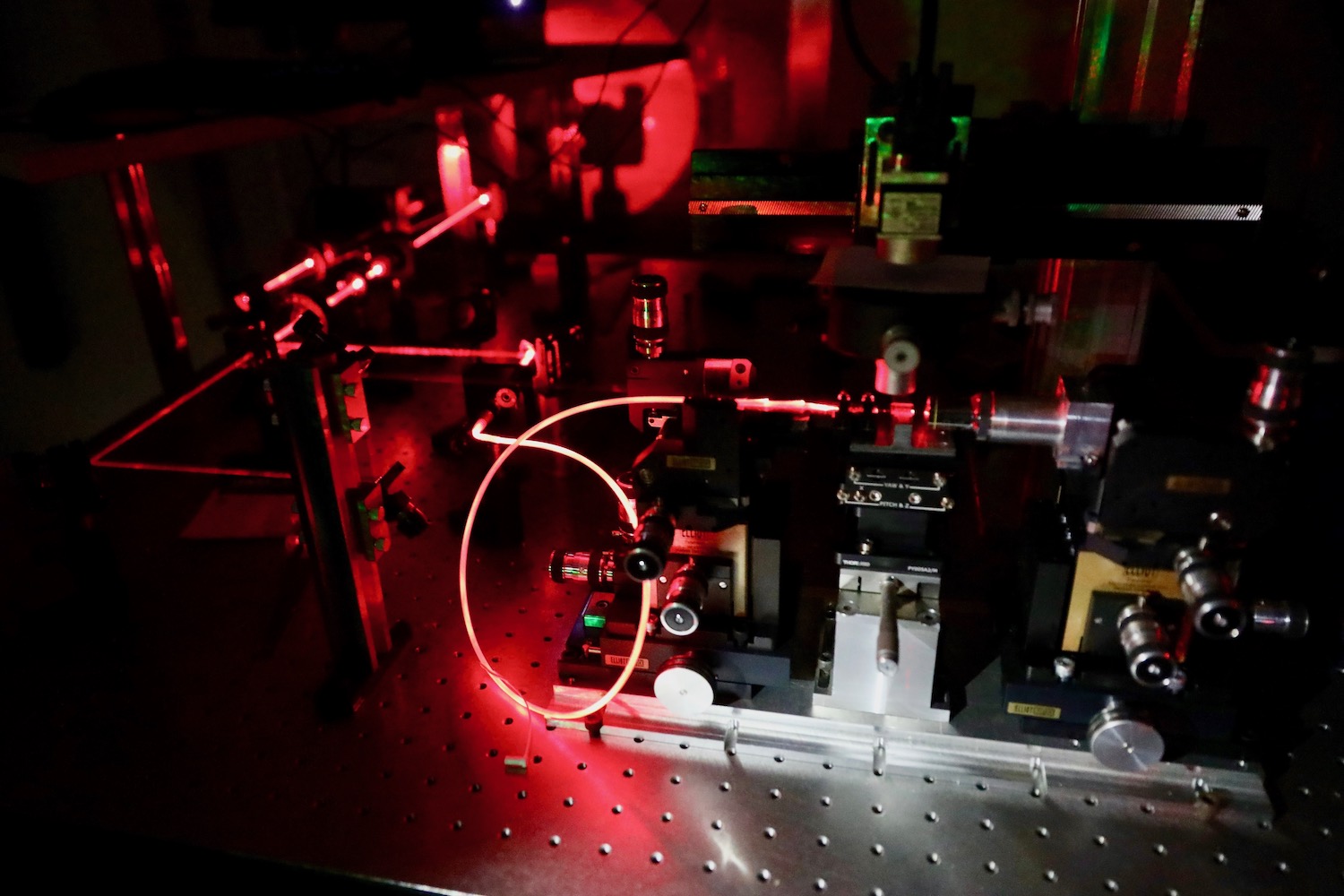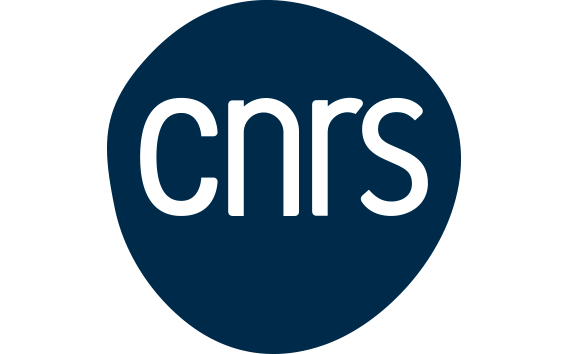Optics and photonics
Optical fiber fabrication center

- Description
-
The Fiber Optic Preform Fabrication Center was founded in 1986 and is equipped with: devices to manufacture preforms by Modified Chemical Vapor Deposition (MCVD), a fiber preform drawing tower, instruments for the opto-geometric characterization of fiber preforms, equipment for the spectroscopic description of rare-earth-doped fibers, and computer facilities for fiber design.
This Center has expertise in the manufacture of so-called “special” optical fibers doped with active optical components such as rare-earth elements used in amplified optical telecommunications and lasers. Such fibers are associated with the design of optical waveguides having extremely varied modal, spectral, and dispersion properties. Advanced research projects focus on the spontaneous nanostructuration of amplified dielectric nanoparticles for light sources and innovative amplifiers, as well as the curing by radiation of rare-earth-doped amplified fibers.
The Center provides prompt consulting to outside companies and research organizations on innovative structures and/or dopings for special optical fibers.
This Center has been part of the CNRS Scientific Interest Group on Innovative Research on New Optical Fibers (GRIFON) since 2005. GRIFON is a unique center of expertise both in Europe and internationally. Open to the academic world, it provides modern means to develop optical fibers with new functions. - Members
-
Ude Olivier
Ude Michele – team leader
Integrated optics in lithium niobate – OPTINIL

- Description
-
OptiniL’s main mission is the manufacture of optical waveguides on lithium niobate by the Soft Proton Exchange technique invented and developed there. The staff at OptiniL have responsibility for most of the fabrication and characterization of components and optical integrated circuits in lithium niobate designed at the Institute. In addition, the staff participates in the development of new manufacturing processes and tools for optical circuits.
As a result of a close collaboration with the CNRS Research Center on Heteroepitaxy and its Applications (CRHEA), the OptiniL platform has access to the facilities at CRHEATEC for lithography work. Ion exchanges and periodic polarization are performed on custom equipment developed and built at INPHYNI. Cutting and polishing are carried out by a carefully-selected subcontractor. - Members
Doutre Florent – team leader
Tronche Hervé
Sandoval Miguel Gerardo
Optics and photonics for the light-matter interaction – OPTIMAL

- Description
-
Description coming soon
- Members
-
Cheriaux Gilles – team leader
Patricia Loren Inacio


